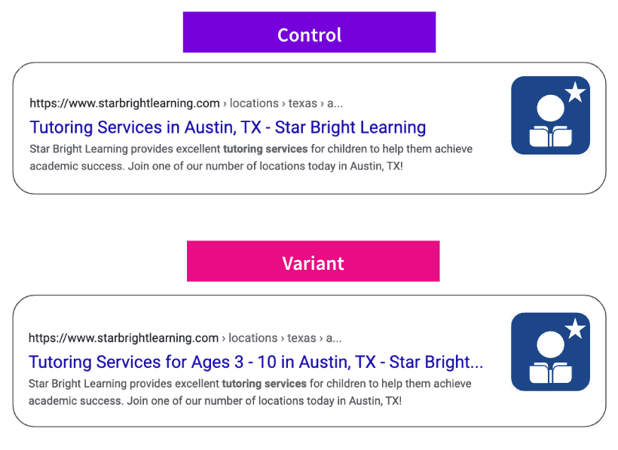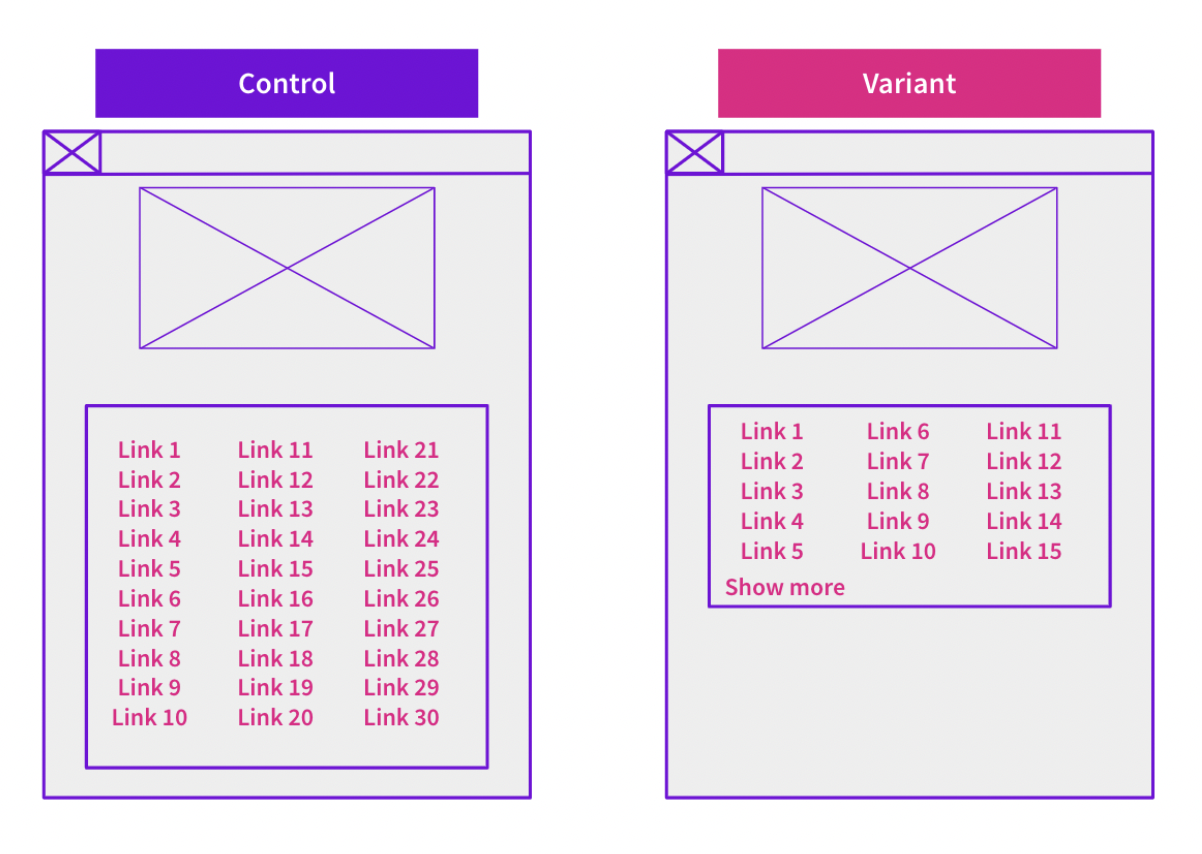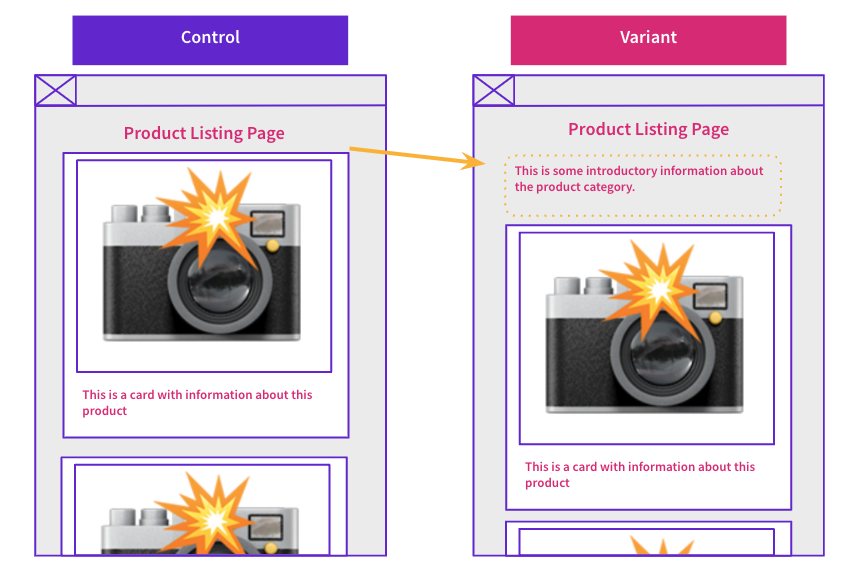Start here: how our SEO split tests work
If you aren't familiar with the fundamentals of how we run controlled SEO experiments that form the basis of all our case studies, then you might find it useful to start by reading the explanation at the end of this article before digesting the details of the case study below. If you'd like to get a new case study by email every two weeks, just enter your email address here.
For this week’s #SPQuiz, we asked our Twitter followers and Linkedin followers what they thought the impact on organic traffic would be when we added the age ranges into the title tags of their location pages.
Here’s what they thought:
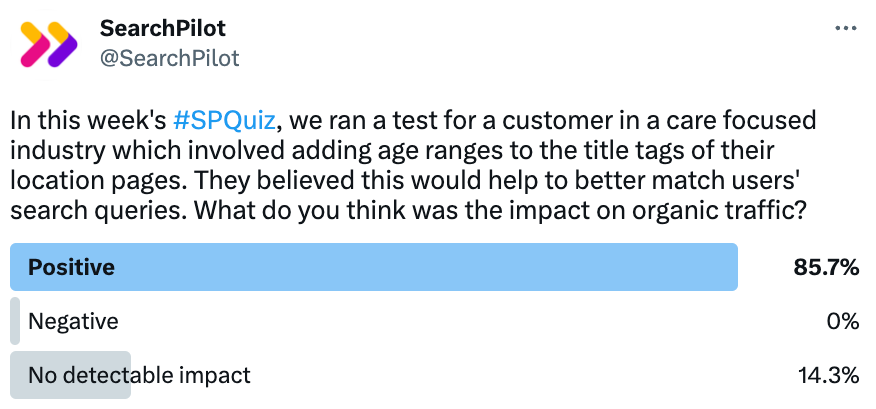
Most of our Twitter followers believe this change positively impacted organic traffic, while 14% think it had no impact whatsoever.
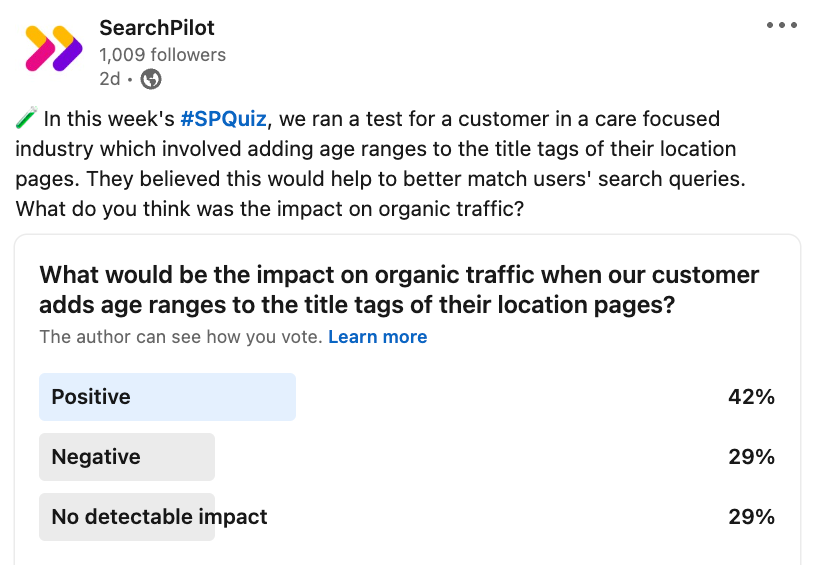
About 42% of our LinkedIn followers believe it would have a positive impact on organic traffic and evenly split between those that thought it was negative or no detectable impact.
This change was positive at the lower confidence!
Read the case study below to find out!
The Case Study
This week’s case study is from a customer in the care industry looking to provide more helpful information to their target market in search results. They decided to test making their title tags more specific by adding age ranges for their services based on location to match what people search for on Google and improve organic rankings. The customer also thought this change might improve click-through rates if Google reflected the change in search results.
Below is an example of the comparison between the control and the variant titles for a company that provides age-specific services:
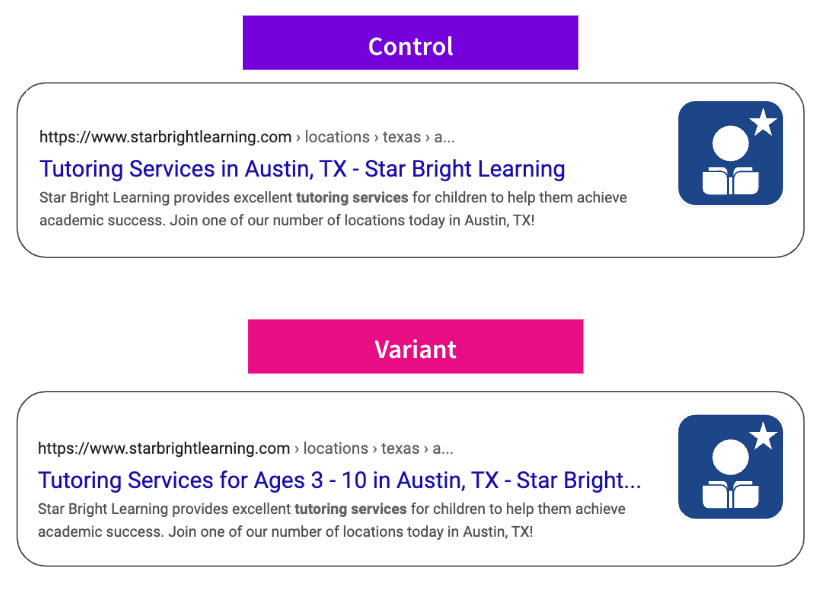
How did this test perform when we added the ages to their location pages?
The chart below shows the impact of this test on organic sessions for the combined group:
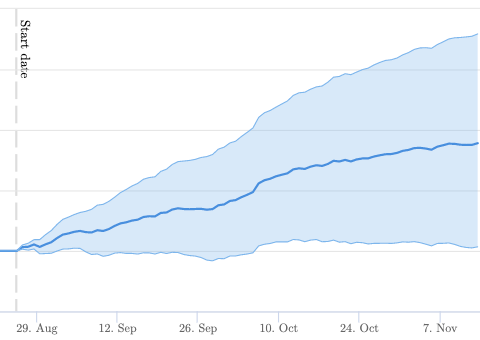
Well, the results are in, and it’s good news! This experiment led to a 4% uplift in organic sessions with 90% confidence.
This result could be attributed to adding more specific content in the title tags about the services offered in that location, which may have led to both an improvement in rankings for keywords specific to the age ranges and improved click-through-rates due to users having a better understanding of the offering from the search results.
We’ve also seen a similar upward trend in organic sessions in another test involving adding the item’s brand name and location at the end of the title tag to make it easier for users to identify relevant content.
At SearchPilot, we understand that we’re doing business, not science, so given that this change was based on a solid hypothesis and more likely positive than not, we decided to deploy this change to capture any incremental gains available from this change.
These findings suggest that a targeted approach to website optimization, such as including relevant detailed information in title tags, can impact rankings and drive increased traffic and engagement.
To receive more insights from our testing, sign up for our case study mailing list, and please feel free to get in touch if you want to learn more about this test or our split-testing platform.
How our SEO split tests work
The most important thing to know is that our case studies are based on controlled experiments with control and variant pages:
- By detecting changes in performance of the variant pages compared to the control, we know that the measured effect was not caused by seasonality, sitewide changes, Google algorithm updates, competitor changes, or any other external impact.
- The statistical analysis compares the actual outcome to a forecast, and comes with a confidence interval so we know how certain we are the effect is real.
- We measure the impact on organic traffic in order to capture changes to rankings and/or changes to clickthrough rate (more here).
Read more about how SEO A/B testing works or get a demo of the SearchPilot platform.
